
Traveling Through History
Issue 37: Prague Castle - Prague Czech Republic, Part 2
If you are reading this newsletter for the first time, Part 1 of our trip to Prague was last week. Click here to read that first.
This week we explore what it would be like to spend the entire day at Prague Castle.
For over 1100 years, Prague Castle has dominated the landscape in this picturesque city. It has survived sieges, fires, numerous wars and changes in rulers and governments.
Now an interactive ‘museum’ to its former life, the castle offers an array of wonderful and mysterious things to see and do.
Enjoy Traveling Through History at Prague Castle with me this week.
Michelle
Savvy Travel Historian
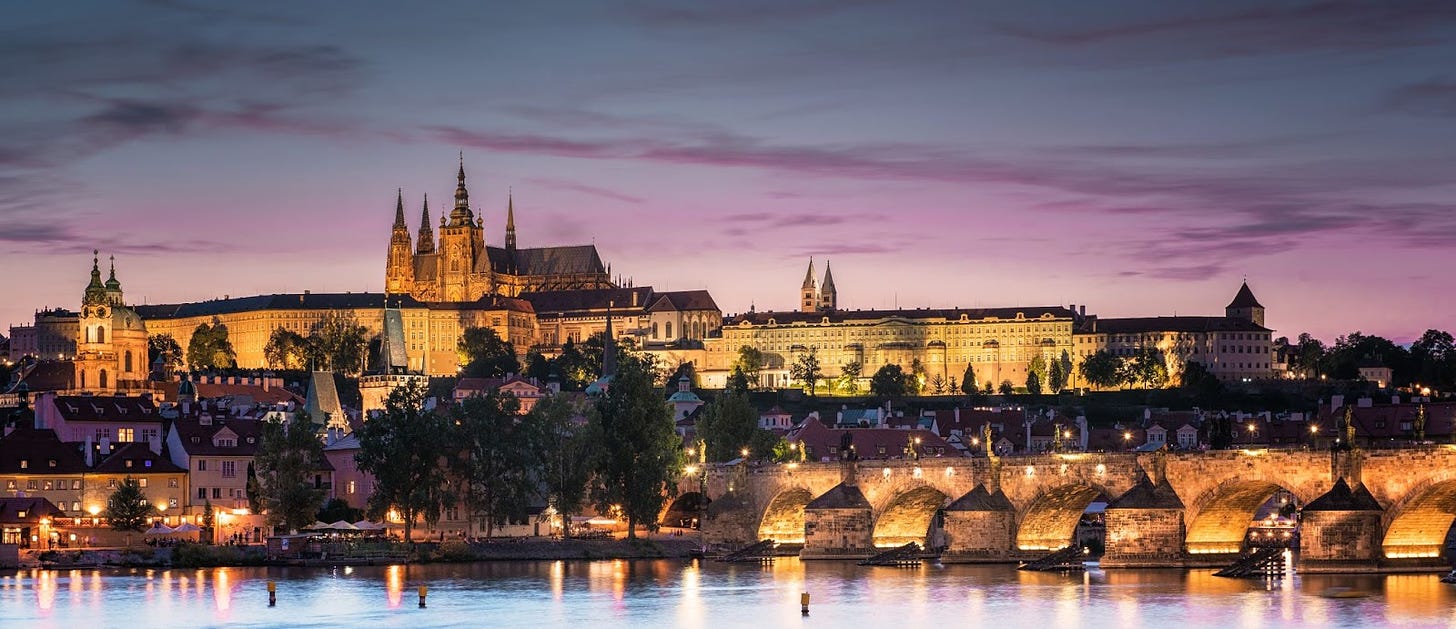
The official office of the President of the Czech Republic, and the largest ancient castle in the World (from the Guinness Book of Records), Prague Castle was built in the 9thC and was the site of the first convent in Bohemia.
Located in Lesser town in Prague 1, the best way to access the castle is by taking Tram 22 or 23 to the top (Prażský hrad stop) and make the long walk downhill as you see all that it has to offer on the way to the bottom.

Historians looking at written sources and archaeological diggings date Prague Castle to around 880, when Prince Bořovoj from the house of Premyslides was ruler.
The medieval castle was fortified with a moat and the first ‘walled’ structure was the Church of Virgin Mary, which no longer exists.
In the first half of the 10thC St Vitus Basilica and St George’s Basilica began construction, during the reign of Vratislaus 1, Duke of Bohemia and his son St Wenceslaus.
Many of you would know the Christmas carol ‘Good King Wenceslas’, one of the oldest known Czech songs, tracing back to the 12thC. It is named after Vratislaus’s son who lived from approx 907-935. Although he was never actually a ‘king’ during his lifetime, he was martyred after his death (having been killed by his younger brother) and posthumously conferred the title of King by Holy Roman Emperor Otto I.

We know that Venetian’s visited the castle in the 13thC, because several coins from the city have been found by archaeologists.
Ottokar II of Bohemia rebuilt the royal palace to provide housing and to receive guests such as ambassadors from other lands and he also increased fortifications.
The royal palace was rebuilt in the 14thC by Charles IV and the fortifications were strengthened.
The current and largest (Gothic) version of St Vitus Cathedral built on the present day site, was commenced during this time but would take almost six centuries to complete.
During the Hussite Wars of 1419-1434, the castle was unoccupied and remained that way until 1485 when the castle was rebuilt by Vladislaus II.
After a large fire in 1541 destroyed parts of the castle, the Hapsburgs added some renaissance style buildings and Rudolph II added the northern wing, now used for many state occasions by the Czech President.
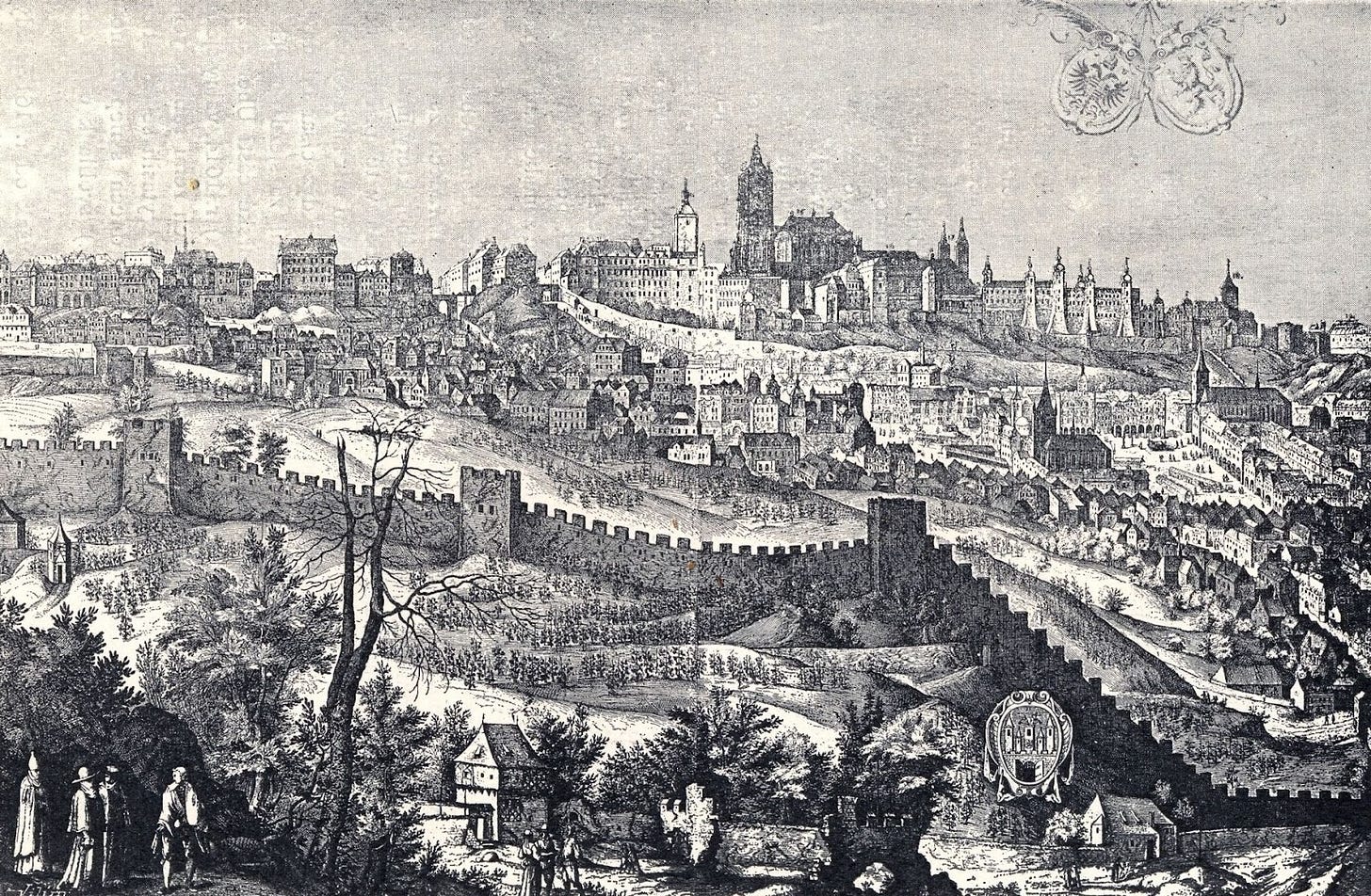
During the Third Defenestration of Prague in 1618 and in the subsequent years, the castle was damaged and fell into disrepair. During the Battle of Prague at the end of the Thirty Years’ War, many treasures from Rudolph II were looted by the Swedes.
During the reign of the Empress Maria Theresa (1740-1780), the last major rebuild of the castle occurred and following his abdication in 1848, Ferdinand I made it his home.
He was the last ‘royal’ to live there.
In 1918 the new President of the Czechoslovak Republic, Masaryk, made the castle the ‘seat’ of power for the government and renovations of the royal palace and gardens began. St Vitus Cathedral was finally finished in 1929.
As mentioned last week, during WWII the Nazi occupation of Czechoslovakia, Reinhard Heydrich made Prague Castle the headquarters for him in his role as Reich Protector of Bohemia and Moravia.
In March 1939, Hitler spent the night there, surveying his new ‘treasures’.

Rumour has it that Heydrich had placed the crown of Bohemia on his head and an old legend predicts that any ‘usurper’ who wears the crown, will be dead within a year.
Less than a year later he was ambushed on his way back to the castle and died of an infection in his wounds a week later. His son also died the next year in a traffic accident, thus maintaining the ‘legend’.
The Castle became the seat of government once again after the Coup of 1948 and continued after the split in the former Czechoslovakia in 1993.

The Castle Guard is there to defend the seat of power and government, particularly the President.
Originally established in 1918 to protect the new President, the unit of around 900 soldiers perform various tasks under the rule of the Ministry of Defence.
Only during the war years, 1939-1945, was the guard reduced and then abandoned until its re-establishment in 1945.
The changing of the guard takes place everyday at 12 noon in the first courtyard.

More information on the guards can be found here:

An all inclusive ticket to Prague Castle allows you to view all the displays and exhibits within its walls.

Located on the authentic Gothic floor from the Old Royal Palace, The Story of Prague Castle is a fascinating walk through its history.
While there are too many things to cover in this short newsletter, the following highlights are worth looking at.
Although most of the archaeological finds associated with Prague Castle are dated to the Stone Age, research and diggings around Stag Moat in 2004 uncovered evidence of Ice Age activity, including Mammoth bones as shown above.
There is still further research to do on the samples taken from the moat and further artifacts could yet be discovered.

This illuminated book is from the last quarter of the 11thC and likely gifted to the St Vitus Chapter in 1086 for the coronation of Duke Vratislav II.
The image shows scenes of the nativity and the Annunciation of the Shepherds, with St John’s Gospel on the opposite page.

St Wenceslaus’ Chainmail is also on display. It consists of a square shaped cloak and detachable (type of standing) collar.
The upper section of the collar has three lines of a golden fringe made of almost pure gold rings. The collar was once attached to the cloak but at some point was separated and used as an attachment to his helmet (shown below).
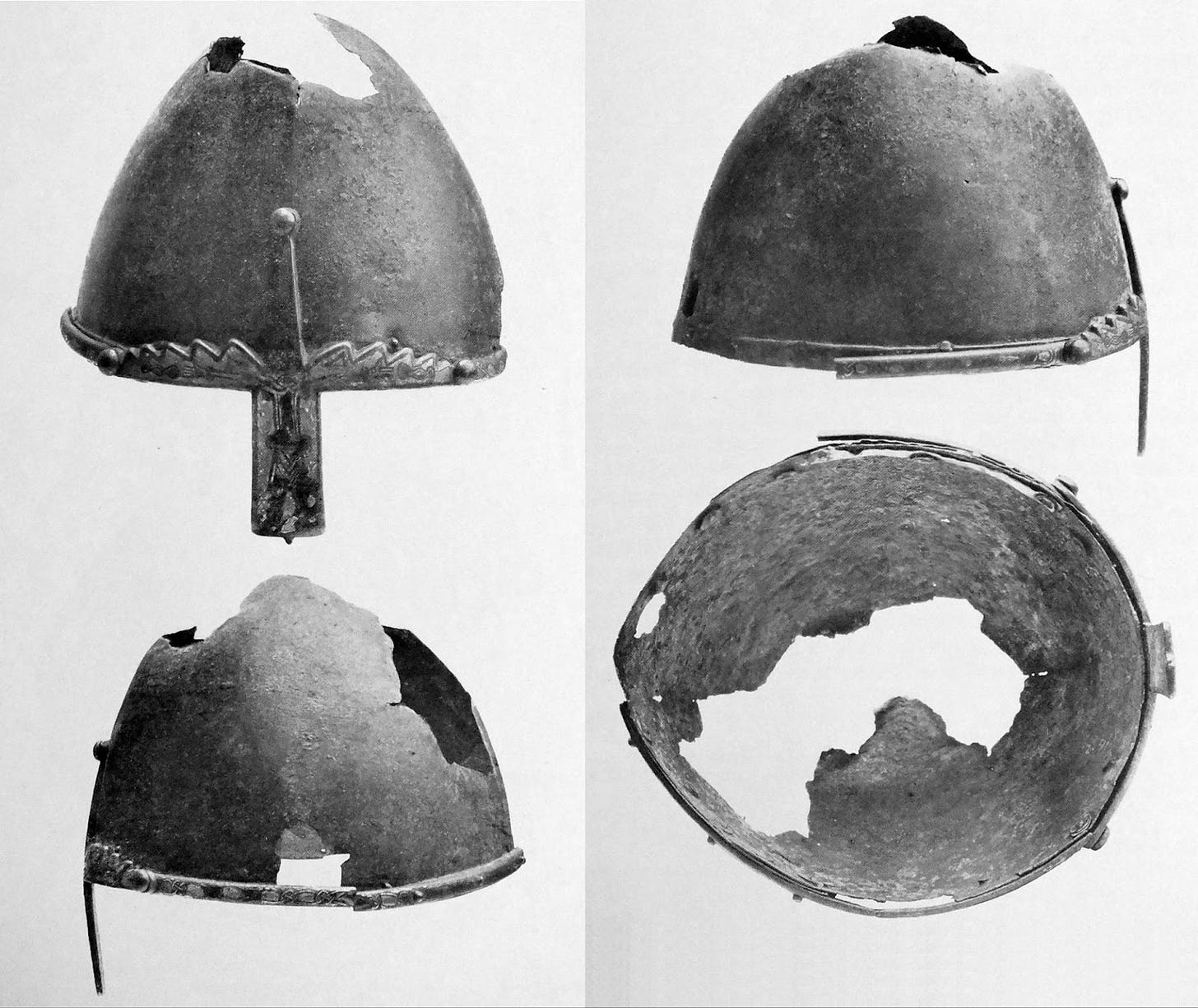
The cloak is made from hammer welded and riveted iron mail links.

Other items worn by Bohemian rulers on display include the grave cloak of Maximilian II from 1576 on the left, which indicated and eastern fashion influence and the items in the middle of the photo, show his tabard, breeches, stockings and slippers, which were Spanish in nature.
The dress on the right is the grave dress of Archduchess Eleonora who died in 1580 at just 12 years old. The dress, made from silk damask was originally white and was sewn in a Spanish style also.

Although the jewels on the crown are now imitations, these grave jewels, a crown an orb and a sceptre, were likely those of Maximilian II dated around 170. Research originally assigned them to Rudolf II but they have since been dated to an earlier period.

This is a preserved grave of what appears to be a ‘warrior’, found with a sword, axe, steel, razor, knife and dagger and dated back to before the 9thC , meaning before the castle site was established.
The sword is the only one to have been found in a grave in the entire area of Prague.

This reconstructed burial clothing belonged to Rudolph I and dates to the beginning of the 14thC.
Fragments were removed from the grave in 1991 and are silk lampas with a gold thread in a Middle Asian style. It is believed he may have also wore it whilst he was alive.

The Hatchment of Maximilian II from 1576 is the only one of its kind that has been preserved. The elaborate nature of the piece shows the skills of the craftsman working at the Castle at the time. The artist has not been identified.
The full history of The Story of Prague Castle can be found here:
Story of Prague Castle

Vladislav Hall (above) has been used for ceremonial events since the Bohemian monarchy. Built from 1493-1502 during the reign of Vladislav II, the stone vaulted roof was one of the most complex spaces built during the Middle Ages and at 16m span was an engineering feat.
In the past, royal coronation and banquets would have been held there.

The Diet was created in its present form around 1559 following renovations of the outer castle walls of an older wing.
From the Middle Ages sessions of the Diet and Court of Justice of the Realm would have been held here. These are the two highest bodies of the land. Important matters of state would have been decided here.

By the 17thC the Diet wasn’t just the King but thirty members of the aristocracy, thirty from the gentry and thirty burghers and they voted on financial and taxation matters, going to war, maintaining borders and any religious questions.
The High Judge of the Kingdom of Bohemia presided over the court, sitting in the throne type seat under the canopy, with the scribes sitting at the table in front.

Replica’s of the Czech crown jewels are on display. This image is of the coronation crown.

Want to know more about the Old Royal Palace?
Click this link: Old Royal Palace

St Vitus Cathedral is the largest and most important church in the Czech Republic.
The main tower is 102.8m high.
The third in a series of churches built on this site, as mentioned previously, the Gothic cathedral began construction in November 1344 and would not be completed until 1929.

It is the Catholic seat of the Archbishop of Prague and in 1997, on the 1000th anniversary of the death of Saint Adalbert, its name (and dedication) was amended to Metropolitan Cathedral of Saints Vitus, Wenceslaus and Adalbert. It contains the tombs of a number of Bohemian kings and Holy Roman Emperors.

The intention of the church (from the perspective of Charles IV) was as a coronation venue, family crypt and treasury for the most precious relics of the kingdom and as pilgrimage for the final resting place of Wenceslaus.

Visitors enter the cathedral from the portal of the western facade and are greeted with the first of many stained glass windows.
The Nave is bathed in light streaming in through the windows, which at the far end are stained glass. The cross crossed ceiling is unique to the 14thC and called ‘Parler’s’ vaults after the architect who designed them.

The Lady Chapel (or Trinity Chapel) has this magnificent altar piece that depicts the ‘Visitation’ which was the meeting of Mary and Elizabeth.
Amongst the first to celebrate the Visitation in the 1390s, the chapel also contains the tombs of Břetislav I and his wife.

The southern view of the cathedral really shows the intricate nature of the design, with the various chapels and altars dotted around the large cathedral interior.

Click here for more on St Vitus Cathedral
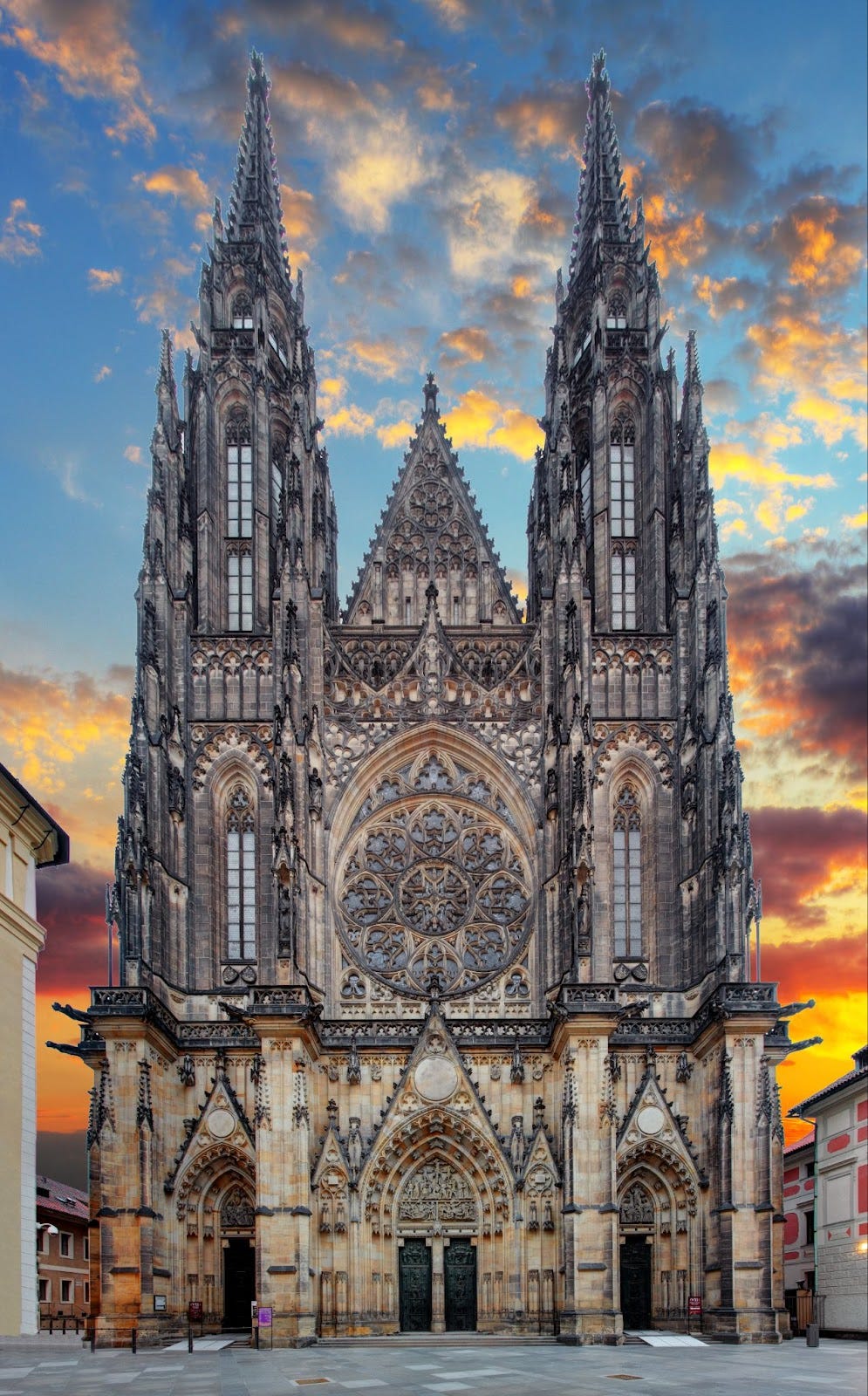

In 1612 the entire collection that Rudolf II amassed comprised 3,000 works.
Unfortunately, over the years and with the many wars the City of Prague were in, resulted in most of the collection being spread across different European cities and counties.
Some paintings were in Vienna during the Thirty Years’ Wars, but those that remained were taken by the Swedish army as war trophies for Queen Christina.
A full imperial inventory in 1647, showed that 500 of these were transferred to Sweden and most of them remain there today. The decimation of the collection can be shown by the 1649 inventory list, which comprised only two paintings and many empty frames.
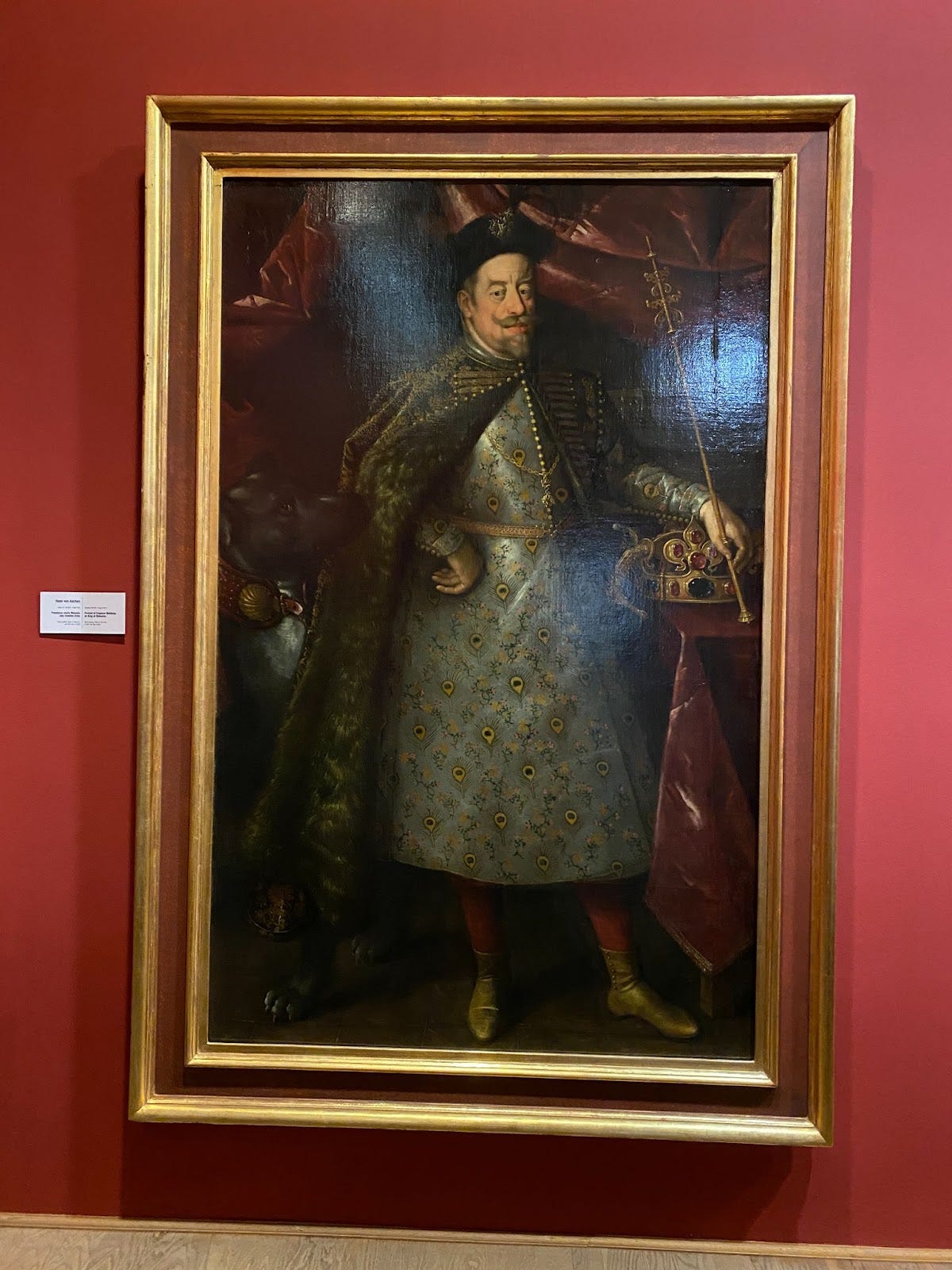
Paintings returned from Vienna and other purchases showed that by 1656, around 600 paintings were in the collection and the value of it was near equivalent to what it was previously.
Over the life of the castle, the collection has been housed in various buildings over the years until 1762 when Maria Theresa distributed them as art on the walls of the palace, sold them or transferred some to Vienna and they were no longer in a dedicated space.
After 1918 the government requested that Austria return the paintings but only lesser rated works were given over and it was not until the 1960s when interest in reassembling the collection during castle renovation, did the process begin.
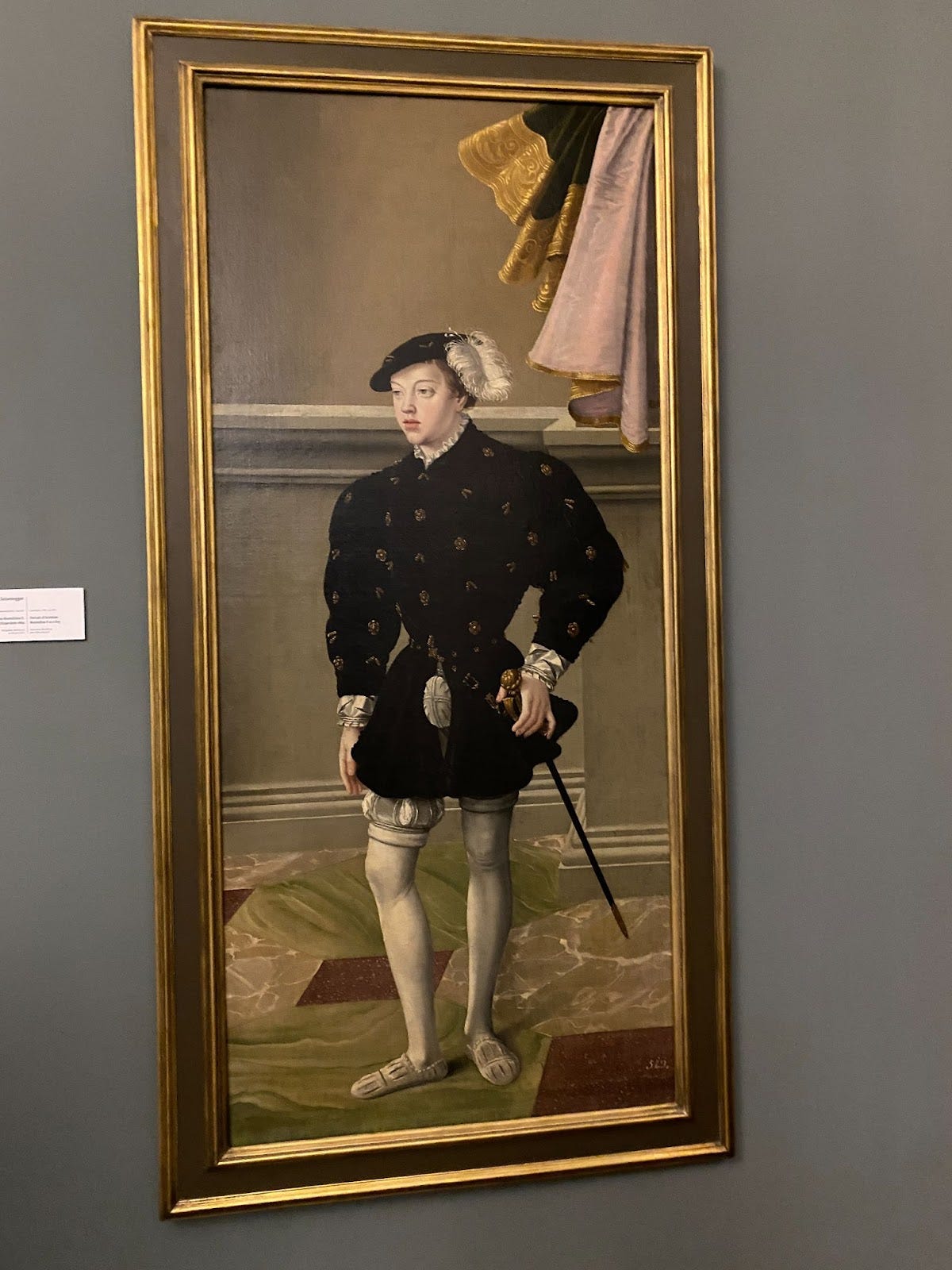
The current space underwent expensive renovation and upgrading to meet modern standards in 1995-98 and several paintings from Rudolf II’s collection were purchased to add to those already owned.
In 2001 it received an international award and parts of the collection regularly go on tour.
More information can be found here:
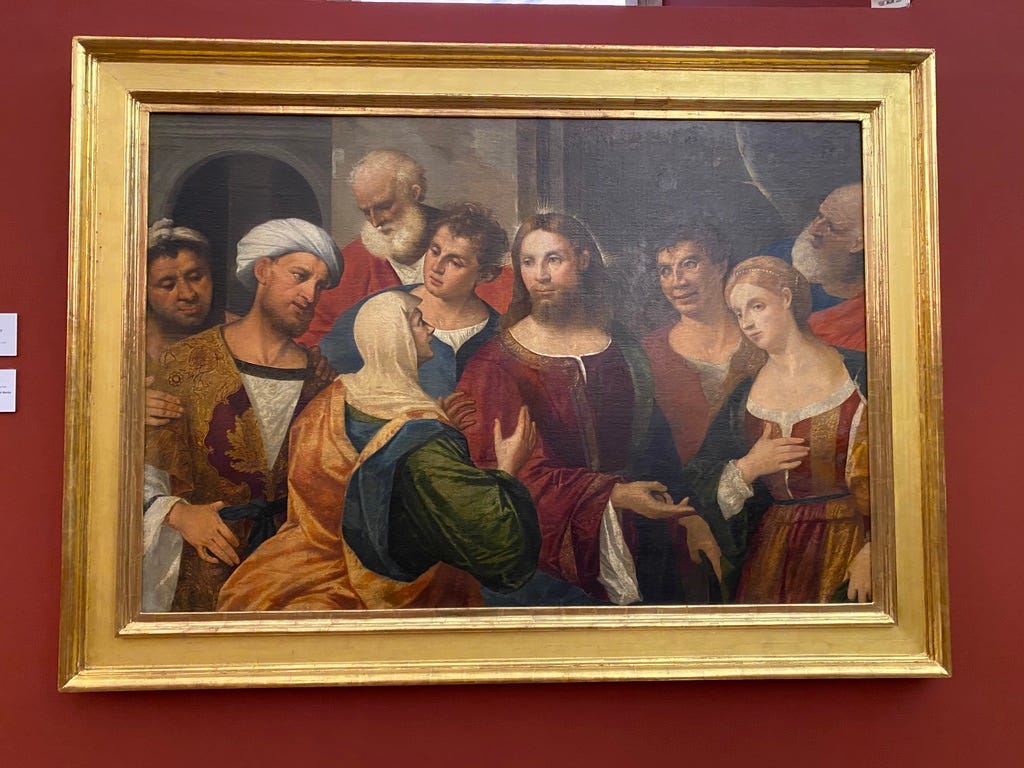
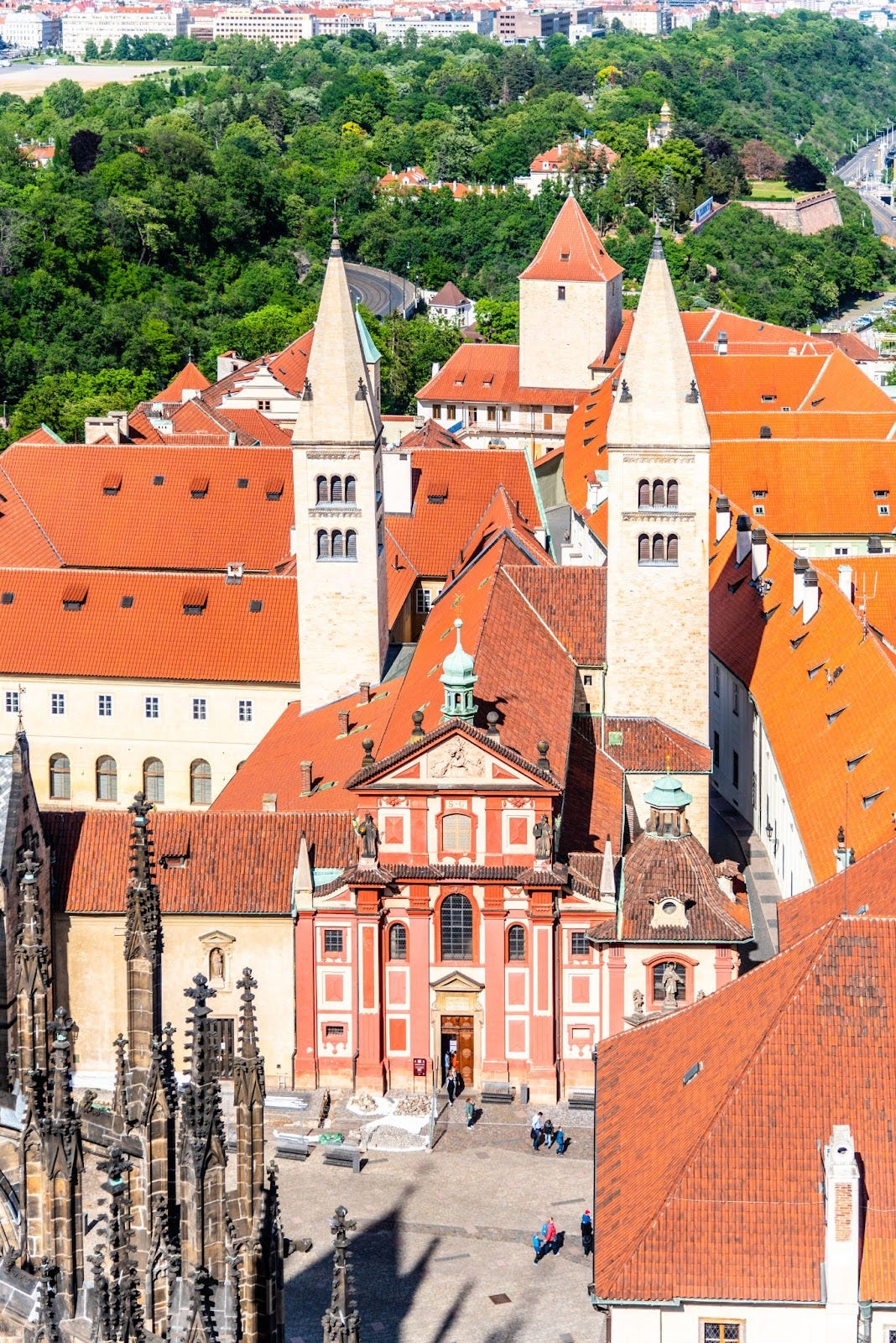
The oldest surviving church within the castle grounds, St George’s Basilica was consecrated in 921 and is Romanesque in style.
It played a vital role in the spread of Christianity in this area, and was completed by Wenceslaus.

A Benedictine abbey was added to the northern side in 976.
In 973 a convent was added, with the abbess given the right to crown the queen consort.
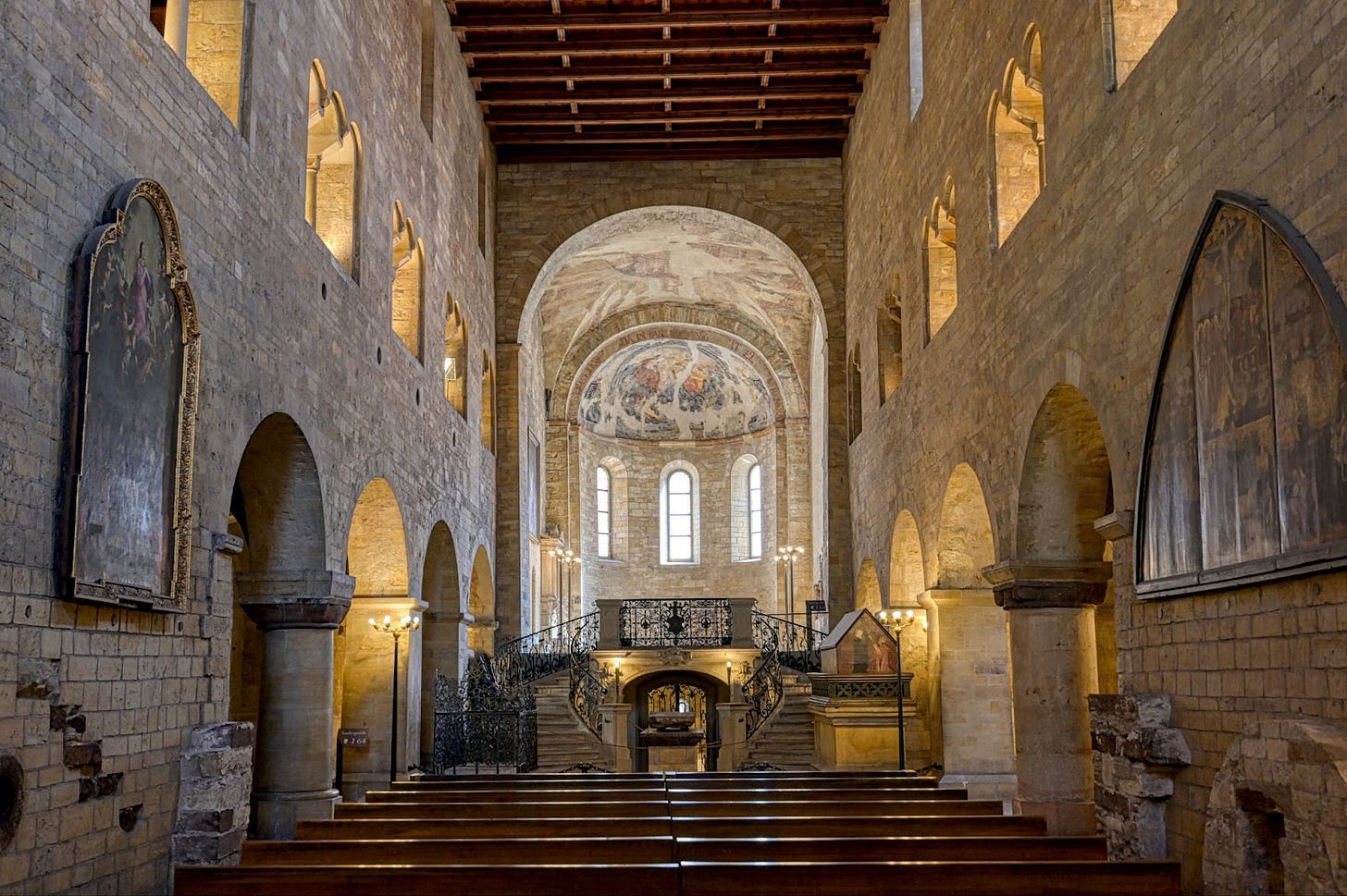
The two towers were added between 1145-1151 after the siege of the castle and subsequent fire destroyed a large part of it.
The baroque facade is from the 17thC.
The chapel of Saint Ludmilla was added in the 14thC.

The fire of 1541 burnt the basilica down and it was rebuilt.
The interior of the church is austere and the walls are mainly plain limestone.

The Chapel of St John of Nepomuk was erected between 1717-22 and the bones of St Adalbert of Prague and arranged in a display case. St Adalbert was the Bishop of Prague before setting out on a mission to spread the Christian message. In 997 he was killed by a pagan mob in Truso (a Viking Age port).

He was venerated in 999 and bones believed to be his were returned to Prague. However, there is some question as to which bones were seized because the city of Gniezno in Poland believes the bones they have are his.
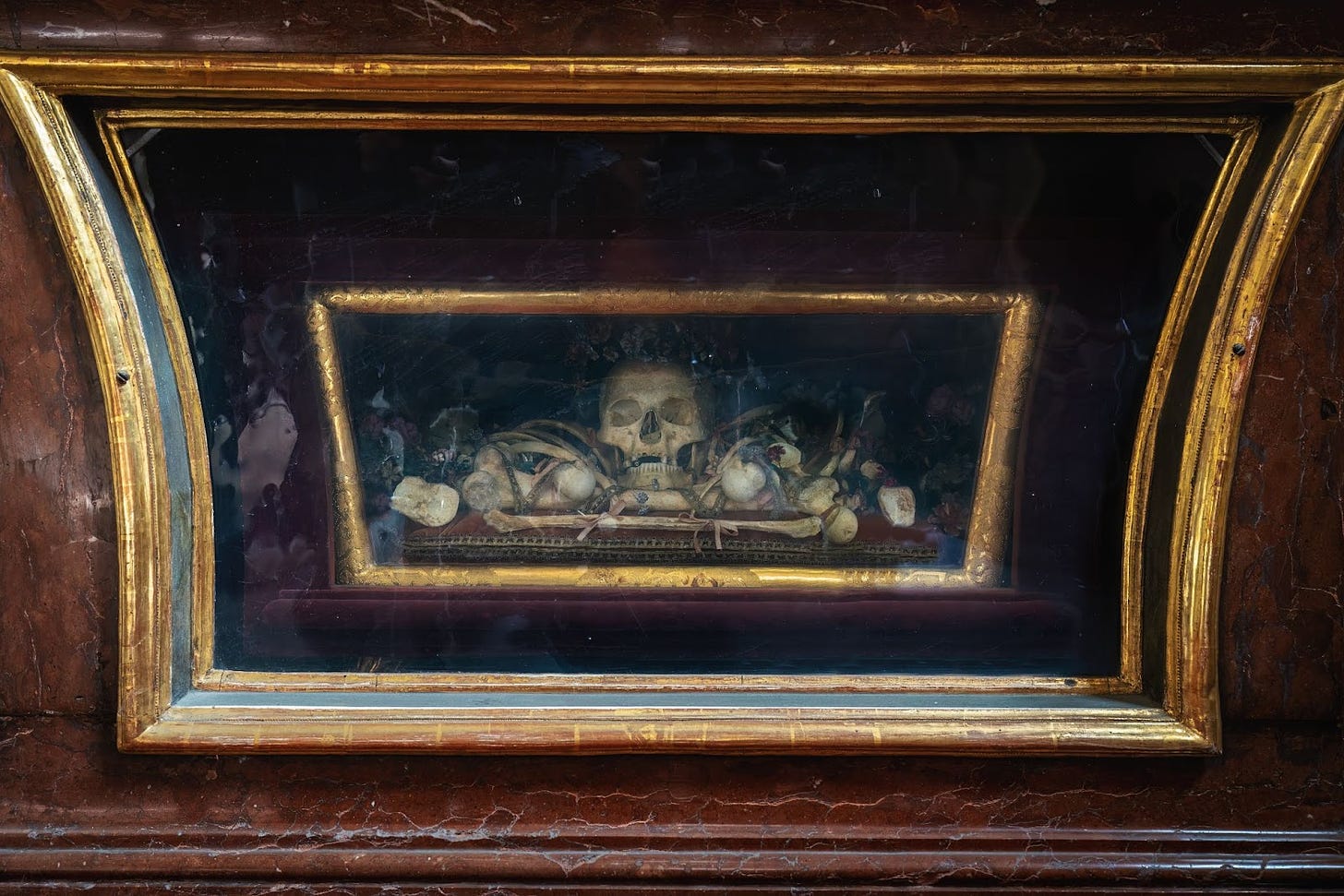
He therefore has two elaborate shrines to him, one in Prague the other in Gniezno.
On April 23, 1997 the 1,000 Anniversary of his martyrdom was celebrated but Pope John Paul II went to Gniezno Cathedral to celebrate it.
To find out more about St George’s Basilica click here:

Originally built as a strengthening and fortification measure for the castle site, marksmen were stationed above the twelve arches to defend the castle, from a position high above the street below.
The fire of 1541 destroyed all of the wooden structures along the lane that were built up over the years, with only some stone walls remaining. Accounts show that some time after, makeshift huts were erected for some of the castle staff.
Around this time at least two goldsmiths moved into the strip (hence its name of Golden Lane now, given to it after the Thirty Years’ War).

During the time of Rudolph II, improvements to the castle were made, including the fortifications in this lower section.
Some of the marksmen asked the Emperor for permission to build under the guard’s walkway above and in 1597 this was granted. This is seen as the birth of what we now know as ‘Golden Lane’.
Even though the guards had to build their homes at their own expense (on ground they did not own), the ‘real estate’ value of this area soon increased and good trade was done by the original 16 who did so. Some owned several of them, to make bigger dwellings.
Although the guardsmen for the first owners, the area soon became popular and were purchased by porters, sextons and artists from other areas within Prague. It quickly became known that good trading could be done here from the people walking back and forth to the castle each day.
Even though during Rudolph’s time it was known as Alchemist’s Alley, there is no evidence that either Edward Kelley or John Dee (famous Scientists/Alchemists at the time) ever worked from this location.

Last week we talked about Franz Kafka. In 1916 an unknown Kafka lived at #22 on Golden Lane. He was searching Prague for a peaceful and out of the way place where he could do his writing in relative solitude.
After viewing several properties in Lesser Town, they went to ‘Alchemist Alley’ (as it was called then), and saw this tiny, run down cottage, which at the time was uninhabitable. Without telling her family, Ottla Kafka rented the cottage and redecorated it and was happy to let the empty cottage be used by her brother to write.
Max Bord, executor of Kafka’s will, visited in February 1917 and notes that this was a period of intense creativity for the author.
In the summer of 1917 the cottage owner revoked the lease and Kafka was no longer able to stay there writing at night. By then he already had tuberculosis and the small damp cottage would have been no good for him anyway.
#22 is now a bookshop, dedicated to its most famous occupant.
In the 1950s castle management wanted to restore and preserve the house and negotiated to buy the properties and the last resident moved out in 1953. The houses were then painted in the bright colours we see today.
A number of cottages have been set up to recreate the shops that used to be trading on the lane.

Cottage #13 (above) is set up to show what a red marksman bunk would have looked like, when palace guards lived there. It was not widened into the alley like some of the others and plans show that it had the only inside toilet of all the cottages on the lane.

At the end of Golden Lane, some of the best views of Prague can be found, before the final descent towards Lesser Town at the bottom of the hill.

Further details about Golden Lane can be found here:

Relevant Travel Information:
Further details on visiting Prague Castle can be found via the following link.
The gardens and out buildings are closed in winter and further details on summer openings can be found below.
Information on the Gardens can be found via this link:
Next week, we take the five and a half hour drive to Stuttgart, where we’ll visit the Mercedes and Porsche Museums.
See you then.
Don’t forget only two weeks left on this offer:
From March 1st, there will be exclusive parts of my newsletter available to paid subscribers only. Until then, you can get a discount of 20% for an Annual Subscription or 10% on a Monthly one. Use the links below to upgrade to paid.
If you would like the Annual option, please click this link:
https://travelingthroughhistory.substack.com/Annual20
For the Monthly option use this link:

Michelle is a speaker, author, content marketer, historian and mother of 3 boys.
After 25 years in business and as the ‘Content Marketing Queen’ for the past 12 years, she has helped countless small businesses understand and develop their content strategies and focus on a customer first approach.
Savvy Travel Historian is her passion project, and her weekly newsletter is available on Substack, Paragraph and Mirror. The latter two allows you to collect each Issue as an NFT.
Michelle is co-host of the Business on the Bloc podcast, a weekly show which talks about the digital media revolution and how it applies to B2B marketing, sales and operations. The show is recorded live every Wednesday at 4pm EST/ 9pm UTC on LinkedIn, YouTube & Bolt+.
You can follow Michelle in these places:
Savvy Travel Historian Instagram
